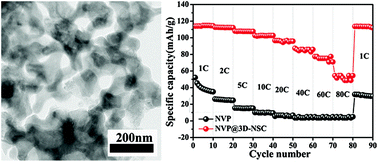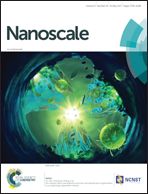Na3V2(PO4)3@nitrogen,sulfur-codoped 3D porous carbon enabling ultra-long cycle life sodium-ion batteries†
Abstract
Na3V2(PO4)3 (NVP) is regarded as a promising cathode material for sodium ion batteries (NIBs) because of its 3D open structure suitable for Na insertion/extraction and high energy density. However, the NVP suffers from poor electrical conductivity, which restricts the rate performance and the long cycle performance of the NVP for NIBs. Here, the NVP particles embedded in the N,S co-doped 3D porous carbon matrix (denoted as NVP@3D-NSC) were prepared by a facile process. The NVP@3D-NSC can deliver high specific discharge capacities at high rates (54 mA h g−1 at 80 C). It exhibits a super long cycle life exceeding 6000 cycles (75 mA h g−1 at 20 C after 6000 cycles) and a low capacity-decay rate of 0.36% per cycle. The excellent electrochemical performance of the NVP@3D-NSC is attributed to the specific architecture of the material that combines a variety of advantages: a very short diffusion length of Na+/e− in small NVP particles, a high contact area between the electrolyte and electrode, and a 3D porous structure buffering the volume change during cycling. In addition, the N,S co-doped porous carbon matrix can not only improve the electrical conductivity, but also create some extrinsic defects and active sites, which can enhance the diffusion rate of sodium ions.



 Please wait while we load your content...
Please wait while we load your content...